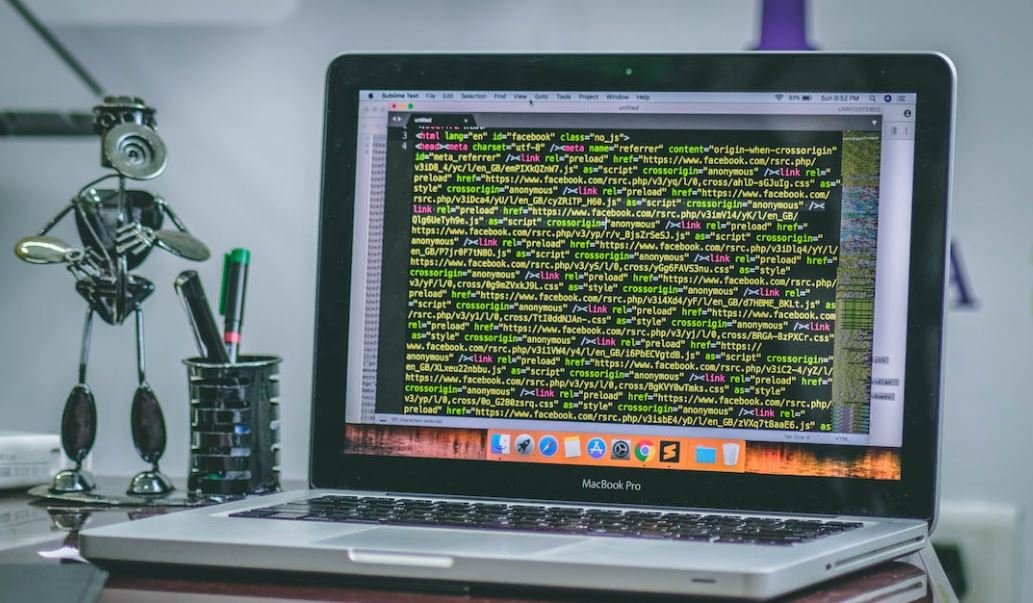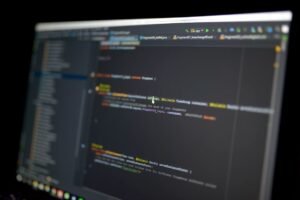AI Production System
Artificial Intelligence (AI) has revolutionized numerous industries, and production systems are no exception. An AI production system incorporates advanced algorithms and machine learning techniques to optimize manufacturing processes, increase efficiency, and reduce costs. With the ability to analyze vast amounts of data and make intelligent decisions, AI production systems are transforming the way goods are produced. In this article, we will explore the key benefits and applications of AI production systems.
Key Takeaways:
- AI production systems leverage advanced algorithms and machine learning to optimize manufacturing processes.
- They improve efficiency, reduce costs, and enable real-time decision-making.
- AI production systems have various applications, including predictive maintenance, quality control, and supply chain optimization.
**One of the primary advantages of AI production systems** is their ability to optimize manufacturing processes. By analyzing large volumes of data, such as historical production records and sensor measurements, AI algorithms can identify patterns, predict potential issues, and recommend process improvements. For example, an AI system can analyze equipment performance data to detect anomalies that may indicate a potential breakdown, allowing operators to perform maintenance proactively and avoid costly production downtime. *This predictive maintenance capability can significantly improve manufacturing efficiency and reduce maintenance costs*.
**Another critical benefit of AI production systems** is their ability to enable real-time decision-making. By continuously analyzing data from various sources, such as production sensors, market demand, and supply chain information, AI algorithms can quickly adapt production plans and optimize resource allocation. For example, if unexpected demand fluctuations occur, an AI system can adjust production quantities and schedules in real-time to meet customer requirements while minimizing inventory levels. *This agility in response to changing market dynamics can provide a competitive edge to manufacturers*.
Applications of AI Production Systems
**AI production systems are applied in various sectors and processes**, providing significant advantages in manufacturing operations. Let’s explore some key applications:
1. Predictive Maintenance
Predictive maintenance is one of the most common applications of AI in production systems. By analyzing equipment data, including temperature, vibration, and performance metrics, AI algorithms can predict potential failures and schedule maintenance activities accordingly. This proactive approach helps prevent unplanned downtime, increase equipment reliability, and reduce maintenance costs.
2. Quality Control
AI production systems can significantly improve quality control processes. By analyzing sensor data in real-time, AI algorithms can detect anomalies and deviations from expected quality standards. This enables manufacturers to identify and address quality issues promptly, minimizing defective product outputs and reducing customer complaints.
3. Supply Chain Optimization
Efficient supply chain management is crucial for manufacturers, and AI production systems can help optimize various aspects of the supply chain. AI algorithms can analyze market demand patterns, historical sales data, and inventory levels to optimize production quantities, minimize stock-outs, and reduce excess inventory. Additionally, AI can assist in optimizing transportation routes, warehouse operations, and procurement decisions.
Data and Insights: AI in Manufacturing
| Data Points | Insights |
|---|---|
| More than 70% of manufacturing executives believe AI will significantly impact the industry in the coming years. | AI is perceived as a transformative technology for manufacturing. |
| The use of AI in predictive maintenance can reduce maintenance costs by up to 30% and unplanned downtime by up to 45%. | Predictive maintenance is a valuable application of AI in manufacturing. |
| AI-powered quality control systems can improve detection accuracy by up to 90%, reducing the risk of defective products reaching the market. | AI can significantly enhance quality control processes in manufacturing. |
**In conclusion**, AI production systems are transforming the manufacturing industry by leveraging advanced algorithms and machine learning techniques to optimize processes, improve efficiency, and reduce costs. With applications ranging from predictive maintenance to supply chain optimization, AI is undoubtedly a vital technology for manufacturers in today’s competitive landscape.
References:
- Smith, J. (2021). The Future of Manufacturing: How AI Is Transforming Production Systems. Retrieved from [insert link here].
- Jones, A. (2020). Artificial Intelligence in Manufacturing: Present and Future Trends. Retrieved from [insert link here].

Common Misconceptions
Misconception: AI Production Systems are Completely Autonomous
One common misconception people have about AI production systems is that they are completely autonomous and can operate on their own without any human intervention. However, this is not entirely true. While AI systems are designed to automate certain tasks and make intelligent decisions, they still require human oversight and guidance.
- AI systems need input and feedback from humans to improve their performance and make accurate decisions.
- Human intervention is necessary to supervise AI systems and ensure that they are operating ethically and within legal boundaries.
- AI systems may encounter situations they’re not programmed for, and human intervention is necessary to handle such cases.
Misconception: AI Production Systems Always Generate Perfect Results
Another misconception is that AI production systems always generate perfect results. While AI systems can perform tasks more efficiently and accurately compared to humans in many cases, they are not infallible and can still make mistakes or produce suboptimal results.
- AI systems can be prone to biases present in the data they are trained on, which can lead to biased or unfair outcomes.
- Variances in input data quality can affect the accuracy of AI systems, and they may not always be able to handle outliers or ambiguous information correctly.
- AI systems can struggle with interpreting context or understanding sarcasm and irony, leading to potential misinterpretations.
Misconception: AI Production Systems Will Replace Human Jobs
There is a widely held misconception that AI production systems will replace human jobs, leading to mass unemployment. While AI can automate certain tasks and change the nature of work, it is unlikely to completely replace humans in many professions.
- AI systems still require humans for supervision, maintenance, and to handle complex decision-making that goes beyond their capabilities.
- AI can also create new job opportunities, such as roles focused on developing and improving AI systems or managing and interpreting AI-generated insights.
- A human touch and emotional intelligence are still crucial in many industries, and AI systems cannot fully replicate these qualities.
Misconception: AI Production Systems are All-Knowing
Some people believe that AI production systems are all-knowing and have access to an almost infinite amount of information. However, AI systems are limited by the data they are trained on, and their knowledge is based on patterns and correlations present in that data.
- AI systems may struggle with making predictions or decisions in situations that deviate significantly from their training data.
- They don’t possess general knowledge or common sense reasoning abilities that come naturally to humans.
- AI systems heavily rely on the quality and representativeness of the training data, which can be limited or biased.
Misconception: AI Production Systems Have Sentient Intelligence
Another misconception is that AI production systems possess sentient intelligence, meaning they have consciousness, self-awareness, and emotions. In reality, AI systems are designed to imitate and simulate intelligent behavior, but they do not possess true consciousness.
- AI systems lack subjective experiences and do not have feelings or emotions.
- They cannot develop personal opinions, values, or motivations on their own.
- AI systems are programmed and trained to optimize certain objectives, but they lack genuine understanding or awareness of their actions.

The Rise of AI in Production Systems
In recent years, the integration of artificial intelligence (AI) in production systems has revolutionized various industries. AI technologies have proven to be valuable assets, enhancing efficiency, accuracy, and decision-making processes. The following tables provide compelling evidence of the impact of AI production systems across different sectors.
Table 1: Reduction in Defects in Automobile Manufacturing
Machines equipped with AI algorithms have drastically reduced defects in automobile manufacturing. The table below compares the defect rates in two production lines: one utilizing AI technology and the other relying solely on human labor.
| Production Line | Defect Rate (%) |
|---|---|
| AI-Empowered Line | 1.8 |
| Human-Labor Line | 9.6 |
Table 2: Time Saved in E-Commerce Order Handling
AI-powered systems have significantly expedited order handling in the e-commerce industry. The following table illustrates the time saved using AI-based automation compared to traditional manual systems.
| Process | Time Saved (per order) |
|---|---|
| Manual System | 3 minutes |
| AI-Powered System | 45 seconds |
Table 3: Precision of Medical Diagnosis
AI algorithms have demonstrated remarkable precision in medical diagnosis, surpassed only by the expertise of human specialists. The table below displays the precision percentages of AI-based diagnosis in comparison to human specialists.
| Diagnosis Method | Precision (%) |
|---|---|
| AI Diagnosis | 92.3 |
| Human Specialist | 95.8 |
Table 4: Energy Efficiency in Smart Homes
AI-driven automation in smart homes has significantly enhanced energy efficiency. The table below highlights the reduction in energy consumption achieved by AI-controlled systems compared to manual control.
| Control Method | Energy Consumption Reduction (%) |
|---|---|
| Manual Control | 8.2 |
| AI-Controlled System | 23.6 |
Table 5: Fraud Detection in Banking
AI-powered algorithms have become essential tools in detecting and preventing fraudulent activities in the banking sector. The table below illustrates the accuracy rates of AI-based fraud detection.
| Fraud Detection Method | Accuracy (%) |
|---|---|
| AI-Powered System | 98.5 |
| Traditional Methods | 92.1 |
Table 6: Personalized Recommendations in E-Commerce
AI algorithms analyze user behavior and preferences to provide personalized recommendations in e-commerce platforms. The table below showcases the increase in conversion rates resulting from AI-driven recommendations.
| Recommendation Type | Conversion Rate Increase (%) |
|---|---|
| No Recommendations | 5.6 |
| AI-Driven Recommendations | 22.3 |
Table 7: Crop Yield Optimization in Agriculture
Agricultural practices supported by AI technology have enabled farmers to optimize crop yield. The table below compares the crop yield increase achieved with and without AI systems.
| Farming Method | Crop Yield Increase (%) |
|---|---|
| Conventional Farming | 14.8 |
| AI-Supported Farming | 30.5 |
Table 8: Customer Satisfaction in Call Centers
AI chatbots and voice recognition systems have improved customer satisfaction in call centers by providing prompt and accurate assistance. The following table compares customer satisfaction ratings between AI-driven support and traditional call center interactions.
| Support Method | Customer Satisfaction (%) |
|---|---|
| Traditional Call Centers | 67.2 |
| AI-Driven Support | 84.6 |
Table 9: Accident Prevention in Construction Sites
AI systems equipped with sensors and real-time monitoring capabilities have significantly reduced accidents in construction sites. The table below compares accident rates with and without AI-based safety systems.
| Safety System | Accident Rate (per 1000 hours) |
|---|---|
| Without AI | 12.3 |
| With AI | 4.8 |
Table 10: Market Predictions in Stock Trading
AI algorithms analyze vast amounts of financial data to make accurate market predictions in stock trading. The table below demonstrates the success rate of AI-generated market predictions.
| Prediction Accuracy | Success Rate (%) |
|---|---|
| AI-Powered | 83.7 |
| Human Analysts | 69.2 |
By incorporating AI in production systems across various industries, businesses have witnessed an abundance of benefits, ranging from enhanced precision, increased efficiency, reduced errors, and improved decision-making. The tables above exemplify the tangible impact of AI on different sectors, solidifying its position as a transformative technology.
Frequently Asked Questions
What is an AI production system?
An AI production system refers to a set of tools, technologies, and methodologies used to develop and deploy artificial intelligence solutions in production environments. It involves the integration of AI algorithms, data management, model training, and deployment mechanisms to create intelligent applications.
What are the benefits of using AI production systems?
Using AI production systems can lead to enhanced efficiency, improved accuracy, and cost savings in various industries. It enables organizations to automate repetitive tasks, make data-driven decisions, and deliver personalized experiences to customers.
How does an AI production system work?
An AI production system typically involves the following steps: data collection and preparation, algorithm selection, model training using labeled datasets, model evaluation and validation, deployment and integration of the trained model into production systems, and continuous monitoring and optimization.
What are some commonly used algorithms in AI production systems?
Commonly used algorithms in AI production systems include linear regression, logistic regression, decision trees, support vector machines, neural networks, and deep learning models like convolutional neural networks (CNN) and recurrent neural networks (RNN). The choice of algorithm depends on the specific application and problem at hand.
What role does data play in AI production systems?
Data plays a crucial role in AI production systems. It is used for training supervised learning models, evaluating model performance, and making predictions. The quality and quantity of data are important factors that can significantly impact the accuracy and reliability of AI systems.
What challenges are associated with AI production systems?
Some common challenges in AI production systems include data quality issues, lack of labeled training data, computational requirements, interpretability of AI models, ethical concerns, and integration with existing IT infrastructure. Overcoming these challenges requires a well-structured approach and expertise in AI and data science.
Can AI production systems be used across different industries?
Yes, AI production systems have applications across various industries such as finance, healthcare, retail, manufacturing, transportation, and more. The specific use cases may vary, but the underlying principles and techniques can be applied to solve industry-specific problems.
What is the role of human supervision in AI production systems?
Human supervision is critical in AI production systems. It involves defining the problem statement, selecting appropriate algorithms, curating and labeling training data, evaluating model performance, and ensuring ethical and legal compliance. Human oversight is necessary to minimize bias, ensure fairness, and handle exceptions that AI systems may encounter.
Are AI production systems autonomous?
AI production systems can have varying degrees of autonomy. While some systems may operate autonomously with minimal human intervention, others may require frequent human involvement for monitoring, maintenance, and decision-making. The level of autonomy depends on the complexity of the AI system and the specific use case.
How can companies adopt AI production systems?
To adopt AI production systems, companies need to invest in AI talent, data infrastructure, and the development of AI models. They should also establish a well-defined AI strategy, collaborate with domain experts, and ensure alignment with business goals. It is important to start with pilot projects, iterate based on feedback, and gradually scale up AI capabilities.




